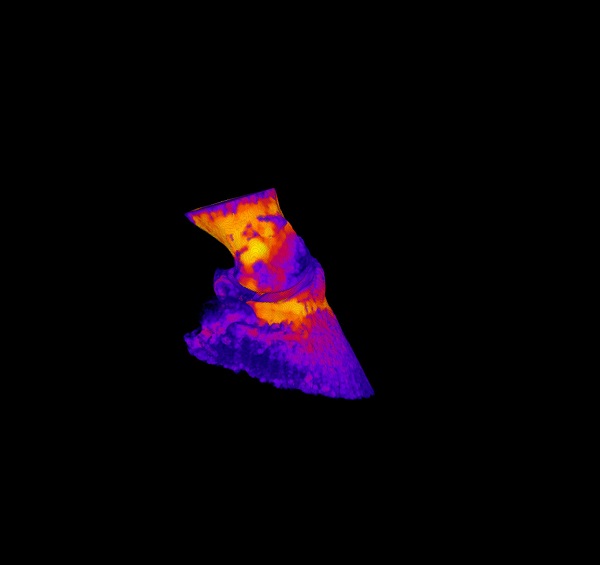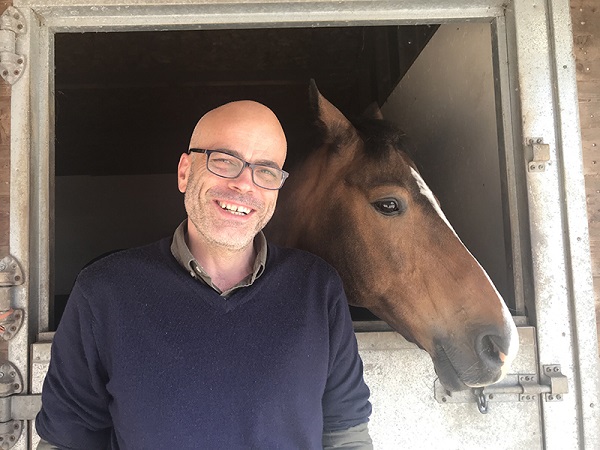Posted: 27th June 2019 | Back to news feed

New light has been shed on an ancient and crippling hoof disease in horses thanks to unique and multidisciplinary research led by scientists at the University of Nottingham.
The study by experts in maths, physics, stem cell biology and equine medicine reveals new clues about the causes and potential treatment of specific hoof diseases. This includes the ‘Aladdin’s slipper’ conformation of the hoof and the potential onset of laminitis – a common and serious hoof condition linked to more than 7% of equine deaths worldwide.
The research reveals new evidence on the mechano-biology of the hoof and related pathologies and challenges traditional perceptions that horse weight is necessarily a significant risk factor.
The study, published in Royal Society Interface, could lead to better diagnosis and treatment of hoof disease in the future.
Hoof pathologies are an ancient problem in horses, mules and donkeys (equids). Aristotle himself wrote on the subject around 350BC and the condition has confounded horse owners and veterinary surgeons to this day. With 110 million working equids helping 600 million people in developing countries, understanding the pathologies of the hoof is crucial for better prevention and management of the condition.
The research team* carried out analyses of the hooves of horses using cutting edge 3D ‘Synchrotron’ imaging techniques, histological sampling and stem cell biology, as well as a field study of 129 horses to provide the most detailed picture of the structure, biology and physical dynamics of the hoof ever produced.

The results show where the stress in hoof growth originates; why the hoof growth rate is higher than the proliferation rate of epithelial cells; how the soft-to-hard transformation of the epithelium allows the hoof to continually weight bear and how hoof misshaping over time is linked to the asymmetrical design of the equids’ feet coupled with an inability of the biological growth stress to compensate for this asymmetry that is central to promote hoof pathology.
Leading the work, Associate Professor in Physical and Mathematical Veterinary Medicine & Science, Dr Cyril Rauch, said: “Our study could have huge implications for the prevention and management of chronic hoof pathologies and deformities in the future in developing countries but also in economically advanced countries where horses are considered as pets. This work also provides a strong base to develop theoretical models for farriery work: strong scientific evidence is really what is needed in this field. Last but not least our study opens a new widow to understand the connection between chronic and acute hoof pathologies.”

With regard to acute hoof pathology such as laminitis, research collaborator Professor Patricia Harris, Head of Equine Studies Group at WALTHAM Centre for Pet Nutrition who provide the science behind the SPILLERS®and WINERGY®brands, said: “While we know that obesity may increase the risk of laminitis we also know that laminitis can affect lean animals, usually those with insulin dysregulation. Genetics obviously has a role to play but the conundrum remains that some horses with one or more predispositions do not get laminitis while others do, and this is why the study is so interesting; it provides an alternative angle to consider rather than insulin per seor obesity per se.”
Reader in Equine Medicine at the Royal Veterinary College, Dr Nicola Menzies-Gow, said: “This collaborative research has combined the expertise of scientists from a wide range of disciplines to focus on a novel angle with respect to a very challenging disease. The findings provide the basis for further research with respect to laminitis and other chronic hoof pathologies. We are excited to see where this may lead.”
Dr Cyril Rauch added: “In conclusion, we have shown a number of things that we want to push forward. The first one is that there is a need to further develop the interaction between scientific and medical fields whatever their origins to allow the ‘Physics of Animal Health’ to be fully established. Secondly, equids are considered as pets in economically developed countries but in developing countries they are very often the only source of income for their owners. This is why we are currently working with SPANA and BROOKES that are remarkable charities investing time and money in developing countries to promote the health and welfare of working equids. Thanks to BBSRC and EPSRC funding for our ‘Physics of Life Network’, we have already travelled to Ethiopia to assess hoof pathologies in working equids to evidence how our work can change lives of horse owners”.
The work was funded by PetPlan Charitable Trust, WALTHAM and The Ministry of Higher Education and Scientific Research of Iraq.
*Collaborators include researchers from the Royal Veterinary College, WALTHAM Centre for Pet Nutrition, Diamond Light Source, Oxfordshire and the College of Veterinary Medicine, University of Dyala, Iraq.
The Equestrian Index newsfeed is compiled from articles submitted by advertising members and expresses the opinions of those members. Watsons Directories Ltd shall not be held liable for any inaccuracies or mis-statements therein.